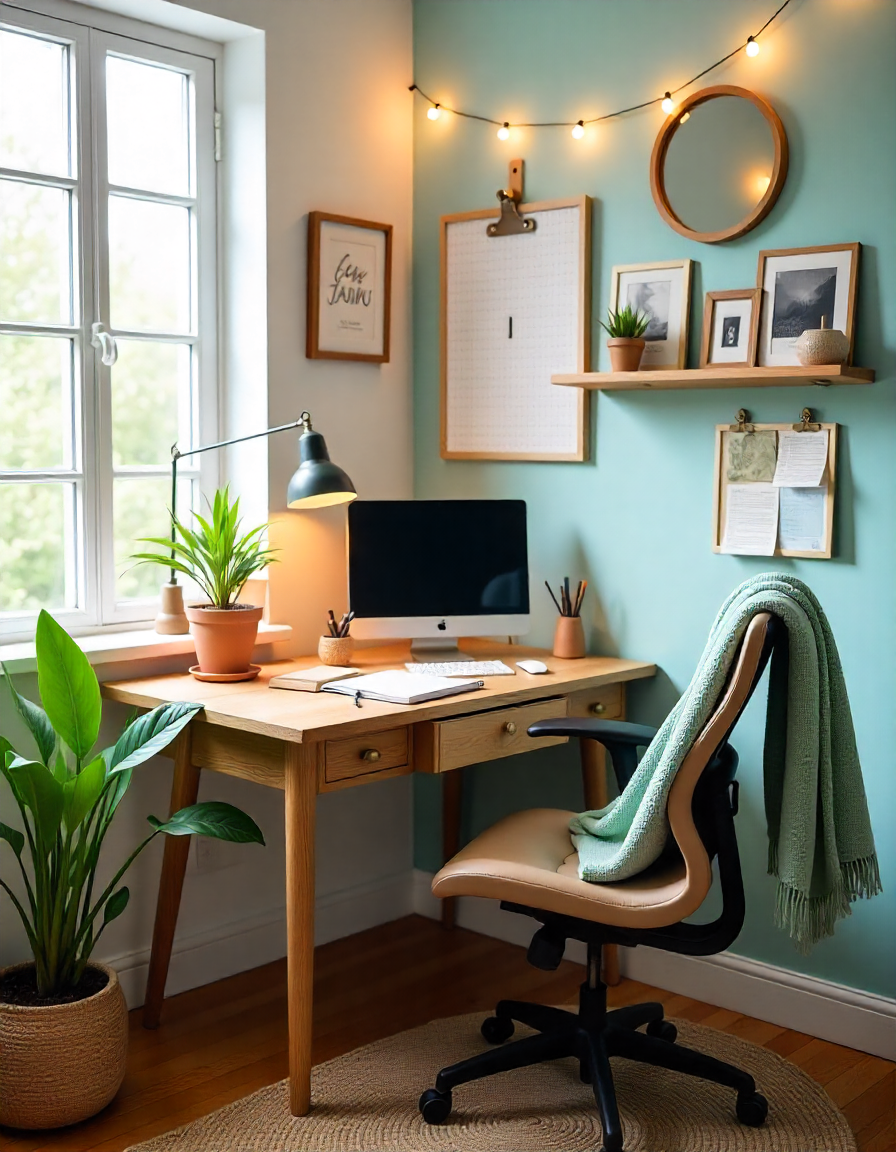Let’s face it, the living room is where life happens—family gatherings, movie nights, or just kicking back after a long day. But giving it a fresh look doesn’t mean emptying your wallet. Start with what you already have. Rearrange furniture to open up the space. Push the sofa against a different wall or angle chairs toward a window for better natural light. This simple switch can make the room feel brand new.
Next, think about color. A coat of paint transforms everything. Pick neutral tones like soft grays or warm beiges if you’re playing it safe, or go bold with an accent wall in deep blue for drama. Hardware stores often have mis-tinted paints at a discount—grab those for under $20 a gallon. Pair it with throw pillows in contrasting patterns. Thrift shops are goldmines for these; mix velvet with cotton for texture.
Lighting matters too. Swap out harsh overhead bulbs for floor lamps with soft shades. String lights draped over shelves add a cozy glow without wiring hassles. Mirrors amplify light—hang one opposite a window to bounce sunshine around.
Declutter ruthlessly. Keep only items that spark joy or serve a purpose. Use baskets for remotes and magazines. Built-in storage like ottomans hides blankets. For wall art, frame family photos or print free downloads from sites like Unsplash. Arrange them in a gallery wall for personality.
Plants bring life—literally. Snake plants or pothos thrive in low light and purify air. Place them on side tables or hanging from ceilings. If you’re crafty, upcycle old jars into vases.
Budget tip: Set a $100 limit and shop sales. Online marketplaces like Facebook Marketplace often have free curbside finds. With these tweaks, your living room becomes a welcoming haven without the splurge.
(Word count: 312)
Blending Vintage Finds with Modern Vibes in Your Kitchen
Kitchens aren’t just for cooking anymore—they’re social hubs. Mixing old-school charm with sleek contemporary elements creates a space that’s both functional and inviting. Begin by scouting antique markets for pieces like a weathered wooden table. Sand it lightly, add a clear coat, and it fits right in with stainless steel appliances.
Cabinetry sets the tone. If yours are dated, paint them white for a clean look or navy for depth. Swap knobs for brass ones—inexpensive but impactful. Open shelving displays pretty dishes; stack vintage plates alongside modern mugs.
Countertops can be pricey, but alternatives like butcher block warm things up. Seal it well to handle spills. For backsplashes, peel-and-stick tiles mimic subway patterns without the mess of grout.
Appliances: Go for energy-efficient models if upgrading, but if not, camouflage older ones with appliance garages—cabinets that hide toasters and blenders.
Herbs on windowsills add freshness—grow basil or mint in mason jars. Lighting under cabinets brightens prep areas; pendant lights over islands draw eyes up.
Textiles soften the space. A runner rug in jute protects floors and adds earthiness. Curtains in linen filter light gently.
Storage hacks: Magnetic strips for knives free up drawers. Hanging pots from ceiling racks saves cabinet space.
Incorporate personal touches—a chalkboard wall for recipes or notes. This fusion keeps the kitchen timeless yet practical, turning meals into memorable events.
(Word count: 278)
Creating a Serene Bedroom Retreat for Better Sleep
Your bedroom should be a sanctuary, not a cluttered catch-all. To craft a peaceful spot, focus on calm and comfort. Start with the bed—invest in quality sheets with high thread count cotton for breathability. Layer with a duvet in soothing hues like lavender or sage green.
Minimize electronics. No TVs; opt for a reading nook with a comfy chair and lamp. Blackout curtains block streetlights, while a white noise machine drowns out noise.
Furniture arrangement: Position the bed away from doors for security. Nightstands with drawers keep essentials handy—books, glasses, a journal.
Walls: Soft pastels promote relaxation. Add texture with woven tapestries or macramé hangings. Mirrors enlarge small rooms but avoid placing them facing the bed to prevent energy disruption, per feng shui principles.
Scent plays a role—lavender diffusers or sachets under pillows aid sleep. Plants like peace lilies filter toxins and humidify air.
Declutter under the bed; use storage bins for seasonal items. A bench at the foot holds extra blankets.
Lighting: Dimmers for evenings, salt lamps for warm amber glows. Avoid blue lights from devices pre-bedtime.
Personalize with meaningful art—photos from trips or quotes that inspire. This setup not only looks good but boosts rest, leaving you refreshed each morning.
(Word count: 245)
Outdoor Spaces: Turning Your Patio into an Extension of Home
Patios bridge indoors and out, perfect for al fresco dining or lounging. Make yours an oasis with thoughtful touches. Begin with seating—wicker chairs with cushions in weather-resistant fabric. Add a hammock for lazy afternoons.
Flooring: If concrete’s bland, lay outdoor rugs in bold patterns. Pavers or gravel create zones for dining and relaxing.
Greenery: Potted ferns and succulents thrive in containers. Vertical gardens on walls save space; herbs like rosemary scent the air.
Shade solutions: Umbrellas or pergolas with climbing vines like jasmine. String lights or lanterns extend evenings.
Furniture: Mix materials—teak tables with metal accents. Fire pits warm chilly nights; gather around for stories.
Water features: A small fountain trickles soothing sounds, masking traffic.
Storage: Benches with compartments hide tools. Weatherproof bins for cushions.
Entertaining: Set up a bar cart with glasses and mixers. Grill stations with nearby prep tables ease hosting.
Maintenance: Choose low-care plants; mulch retains moisture. Clean surfaces seasonally.
This outdoor haven boosts home value and provides a retreat, blending nature with comfort seamlessly.
(Word count: 212)
Sustainable Decor Choices That Last and Help the Planet
Going green in decor isn’t a trend—it’s smart. Opt for materials that endure and minimize waste. Bamboo furniture grows fast, renews easily—beds or shelves in this wood look chic and eco-friendly.
Textiles: Organic cotton or hemp curtains and rugs avoid chemicals. Vintage shopping reduces new production; restore pieces with non-toxic paints.
Lighting: LED bulbs last longer, use less energy. Solar-powered outdoor lights charge by day.
Upcycling: Turn pallets into coffee tables—sand, stain, add wheels. Old ladders become towel racks.
Walls: Low-VOC paints prevent off-gassing. Cork boards or recycled glass tiles for accents.
Floors: Cork or reclaimed wood—soft underfoot, sustainable harvest.
Accessories: Thrifted vases filled with foraged branches. Beeswax candles over paraffin.
Kitchen: Bamboo cutting boards, stainless steel reusable straws.
Bathroom: Linen towels, bamboo toothbrushes.
Bedroom: Organic mattresses from natural latex.
These picks cut costs long-term, support ethical makers, and create healthier homes. Small swaps lead to big impacts, making your space kind to Earth.
(Word count: 198)
Mixing Patterns and Textures for Dynamic Interiors
Bold interiors come from layering patterns and textures thoughtfully. Start small: A striped rug under a floral sofa. Balance with solids—plain walls ground busy prints.
Textures add depth: Smooth leather chairs against fuzzy wool throws. Wood grains contrast metal lamps.
Colors tie it together—pick a palette, say blues and grays, vary shades.
Rooms: In dining, mix china patterns on tablescapes. Bedrooms: Patterned headboards with textured quilts.
Tips: Scale matters—large prints on curtains, small on pillows. Odd numbers group items.
Sources: Flea markets for unique finds. DIY: Stencil walls for custom designs.
This approach keeps spaces lively, reflecting personality without chaos. Experiment gradually for confidence.
(Word count: 132)
Lighting Tricks to Elevate Any Room
Light shapes mood—master it for stunning effects. Layer types: Ambient from ceilings, task for reading, accent for art.
Fixtures: Chandeliers for drama, sconces for walls. Dimmers adjust intensity.
Natural light: Sheer curtains diffuse harshly. Mirrors reflect.
Bulbs: Warm for coziness, cool for offices.
Placement: Highlight features—spots on shelves.
Outdoors: Path lights guide, floods secure.
Smart systems: Voice-controlled for ease.
These strategies make rooms versatile, from bright days to intimate nights.



